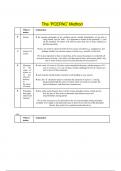Class notes
Tort Law - Revision Bible (1st Class)
- Course
- Institution
In this 250 page document of notes, this Revision Bible includes the lecture notes, textbook reading summaries, and additional / recommended reading which gave me a 1st class in Tort Law.
[Show more]



